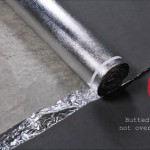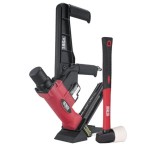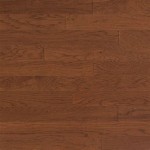How to Paint Laminate Flooring Without Sanding
Painting laminate flooring is a cost-effective way to refresh the look of your space without replacing the entire floor. While sanding is usually recommended for a smooth, long-lasting finish, it's not always necessary, especially if you are working with a well-sealed laminate surface. This article will guide you through the steps of painting laminate flooring without sanding, providing you with essential tips and tricks for achieving a professional-looking result.
Prepare the Flooring for Painting
Before you grab your paintbrush, proper preparation is crucial to ensure a successful painting project. Start by thoroughly cleaning your laminate flooring. Remove any dust, dirt, or debris using a vacuum cleaner with a brush attachment, followed by a damp mop. Once the floor is dry, use a degreaser to remove any oily residue. This step is critical for the paint to adhere properly.
Next, consider the existing finish of your laminate flooring. If it has a glossy finish, you'll need to apply a bonding primer to create a surface conducive to paint adhesion. A bonding primer helps the paint to stick to the smooth, non-porous surface of laminate flooring. Applying the primer with a roller will ensure even coverage.
Choose the Right Paint
Selecting the right paint is crucial for a durable and aesthetically pleasing finish. Choose a high-quality, acrylic-based floor paint specifically designed for laminate surfaces. These paints offer excellent adhesion, durability, and resistance to foot traffic and scratches. Avoid using oil-based paint, as it can create an overly glossy and slippery surface.
Consider the sheen level of your paint. A semi-gloss or satin finish provides a good balance of durability and a subtle shine. A matte finish, while less resistant to scratches, offers a more natural look. Keep in mind that a glossy finish will highlight any imperfections in the flooring.
Apply Paint in Thin Coats
Once your flooring is prepared and you've chosen the right paint, it's time to start painting. The key is to apply thin, even coats of paint. Using a high-quality paint roller with a short nap will help you cover the surface quickly and efficiently. Start by rolling the paint in one direction, and then overlap each stroke by about 50% to ensure even coverage.
After applying the first coat, allow it to dry completely according to the manufacturer's instructions. This typically takes several hours. Apply a second coat for added durability and depth of color. Remember to apply thin coats to avoid paint build-up that can cause cracking or peeling.
Tips for Success
Here are some additional tips to ensure a successful painting project:
- Open windows and doors for good ventilation during and after painting.
- Use painter's tape to protect areas you don't want to paint, such as baseboards and trim.
- Use a paintbrush to paint intricate areas, such as corners and around fixtures.
- After each coat, clean your roller and brush thoroughly to prevent paint from hardening.
- Consider applying a polyurethane sealant over the paint for extra protection and durability.
Painting laminate flooring without sanding can be a satisfying DIY project. By following these steps, you can transform your floors with a fresh look and enhance the overall aesthetic of your space.

Yes You Can Paint An Old Laminate Floor Lisa S Creative Designs

Diy Painted Laminate Wood Kitchen Floor

How To Paint Laminate Cabinets Without Sanding The Palette Muse

How To Paint Wood Floors Without Sanding The Heathered Nest

How To Paint Your Wood Floors No Sanding Trust Me My Priming Durable Inexpensive Method

How To Paint A Wooden Floor Without Sanding 9 Steps

How To Paint Hardwood Floors No Sanding Required Iekel Road Home

How To Paint Wood Floors Without Sanding The Heathered Nest

How To Paint Wood Floors Without Sanding The Heathered Nest

Diy Painted Laminate Wood Kitchen Floor
Related Posts








